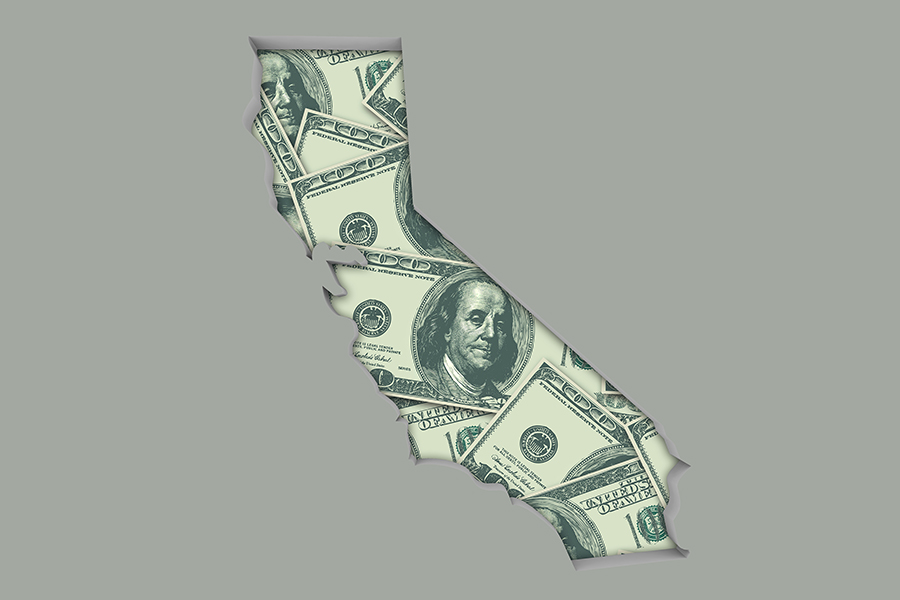First, California was never a slave state, and was never in recent history a Jim Crow state. In fact, the Black population of California appears to be descended largely from Great Migration-era refugees who migrated there to escape historical Southern racism, and loved the place. Between 1910 and 1940 alone, the Black population of Oakland grew by 31.7 percentage points, that of Los Angeles by 13.6 percentage points, that of San Francisco by 12.7 points, and that of Stockton by 9.4 points.
The Golden State eliminated school segregation – which primarily affected Asian-Americans and Latinos – statewide in 1929, and outlawed all racial discrimination in 1931. The one exception to the latter edict was racial “miscegenation” laws, which again applied to all races rather than simply whites and Blacks, and which were repealed in 1948. Mississippi, this was never. California today is also a majority-minority state, which intensifies these problems as reparations to Blacks would be funded largely by Hispanics, Asians, and recent immigrants of all hues. At present, the population of the Left Coast is 40% Latino, 35% white, 15% Asian American or Pacific Islander (“AAPI”), only 5% Black, 4% multi-racial, and 1-2% Native/Indigenous American.
Another BIG issue is that the amounts proposed for reparations payments make no logical sense. It is almost impossible to exaggerate the extent to which this is the case. While the reparations bills authored by Sen. Steve Bradford “merely” propose setting up a major new agency to study the reparations question and eventually manage payouts, the reparations commission plan estimated to provide about $1.4 million to each payee would cost the state $2.8 trillion over 30 years according to PRI’s analysis. Worse, San Francisco’s local proposal would provide “payments of $5,000,000 to every…Black adult” as well as eliminate all “personal and tax burdens,” give “guaranteed annual incomes of at least $97,000” for the next 250 years, and offer homes in core-city San Francisco for “$1 a family.” This seems fairly typical of the ‘serious’ reparations proposals advanced nationally so far.
The…problem with this suggestion is its sheer absurdity. I, of course, would like to receive these benefits too, as well as a thoroughbred charger like the horses medieval knights rode (I am too hefty for a pony) and a new Lamborghini McLaren. But there seems to be o logical or moral reason to hand them out to Black citizens. The entire gap in wealth between Black and white American households, the most obvious proxy for the all-time impact of racism on Aframerican fortunes, is on the order of $150,000 – $24,100 versus $188,200 at the median (Black households have $143,000 in wealth at the mean).
Even this gap, almost universally attributed by left-leaning social scientists to “discrimination” or “the lingering effects of slavery” is hardly due entirely to racism current or past. It is hard not to notice that the typical Black American household now consists of a single mother and her children, versus the two working parents more common for Asian and white families. The Black out-of-wedlock/illegitimate birth rate is currently an astonishing 69%.
It is impossible to sincerely believe that making mathematical adjustments for this variable of household structure, as well as for plain household size, the wildly divergent ages of white and minority Americans, the regions in which these groups live, and their very different levels of study time and thus academic performance would not substantially shrink the modest starting gap in household wealth. Adjusting for marriage alone basically doubles Black household wealth.
Married African-American families boast $49,000 in median wealth (interestingly, in this sample, this compares well to $45,000 for married and mostly Caucasian Hispanic families, and $17,000 for unmarried Hispanic households). After adjusting for the impact of essentially all factors just mentioned on cumulative personal income, a variable that is obviously highly correlated with wealth, Professor June O’Neill found that initial income gaps of more than 15% between Blacks and whites closed to virtually nothing. Per the business resource PayScale, this also seems to be the case re “pay gaps” between men and women.
After every analysis is run and with everything relevant adjusted for, sincere people might still be able to argue that (say) $30,000 should still be paid to each Black American head of household. However, that is not what California’s radicals are arguing for. In the real world, let us hope that Sen. Bradford’s bills stay “paused,” or simply get tossed in the bin by a multi-colored coalition of citizens.
Wilfred Reilly is a professor, author, and PRI senior fellow.


